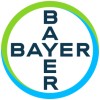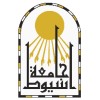
Efficacy and Safety of AngongNiuhuang Pill in Patients With Acute Ischemic Stroke (ANGONG TRIAL)...
Acute Ischemic StrokeAngongNiuhuang pill has obvious effects on the cardiovascular and cerebrovascular diseases. Pharmacological experiments confirmed that AngongNiuhuang pill can protect blood-brain barrier, inhibit capillary permeability, improve the tolerance of cerebral ischemia and hypoxia, reduce oxidative stress injury, thus protecting brain tissue. Clinical studies have also confirmed that AngongNiuhuang pill can increase the GCS score, reduce coma, improve nerve function defect and promote nerve function recovery. The primary purpose of this trial was to evaluate the difference in the volume of cerebral infarction and cerebral edema between Angong Niuhuang pill and placebo in patients with ischemic stroke at 14 days compared with the baseline.

Clinical Trial of Efficacy and Safety of MMH-MAP in the Treatment of Cognitive Disorders in Patients...
Cognitive DisordersThe clinical trial to valuate efficacy and safety of MMH-MAP in the treatment of cognitive disorders in patients with ischemic stroke in the carotid arteries.

Study to Gather Information About Proper Dosing and Safety of the Oral FXIa Inhibitor BAY 2433334...
Acute Non-cardioembolic Ischemic StrokeThe purpose of this study is to try to find the best dose of the new drug BAY 2433334 to give to participants and to look at how well BAY 2433334 works on top of antiplatelet therapy in patients following a recent non cardioembolic ischemic stroke which occurs when a blood clot that has not formed in the heart travelled to the brain. BAY 2433334, works by blocking a step of the blood clotting process in our body and thins the blood and is a so called oral FXIa inhibitor.

Normobaric Hyperoxia Combined With Endovascular Treatment in Acute Ischemic Stroke (OPENS-2)
StrokeAcute1 moreThe current endovascular treatment has increased the recanalization rate to more than 90%. Even so, the prognosis rate of stroke is still less than 50%. Our previous research confirmed that the neuroprotective effect of Normobaric Hyperoxia (NBO) from multiple perspectives. However, the clinical study on NBO was not satisfactory, which might be due to the absence of vascular recanalization therapy. Therefore, The investigators conducted this RCT study to further explore the Efficacy and safety of NBO combined with endovascular treatment in patients with acute ischemic stroke.

An Exploratory Study of Ganglioside GM1 in Acute Ischemic Stroke
StrokeIschemicThe purpose of this study was to evaluate the efficacy and safety of higher doses of monosialoganglioside GM1 injection in the treatment of patients with acute ischemic stroke.

A Study to Evaluate the Q Revascularization System for Neurointervention in Acute Ischemic Stroke...
Acute StrokeCerebral IschemiaAssess the safety and efficacy of the Q Revascularization System to remove thrombi and emboli from the neurovasculature in patients experiencing an acute ischemic stroke

Balance Training on Vestibular Function and Proprioception Feedback in Stroke Patient
StrokeIschemicThe aim of this study was to find out the role of balance training on vestibular function and proprioception feedback in stroke patients. It was a randomized control trial and was conducted in civil hospital Gujranwala. Current study was completed within the time duration of 6 month. Sample size of twenty four patient consists of both male and female aged between 50 years to 75 years. Each group contain 12 patient .Group A was experimental group which received balance exercise in two phases and group B (n=12) was control group received conventional therapy. Each of exercise program begun with 10 mints warm up consisting of walking ad light stretching of hip flexor. The balance training group received the balance training exercise twice a week for 6 week each session comprise of 60 minutes. Each set consisted of 4 periods of 11 exercises and rest of 40 seconds. Many exercises over time was turned into circuit training. Data was analyzed by using SPSS version 23.

Safety and Effectiveness of Remote Ischemic Conditioning Combined With Intravenous Thrombolysis...
Acute Ischemic StrokeThe purpose of this study is to determine the efficacy and safety of remote ischemic conditioning combined with intravenous thrombolysis in treating acute ischemic stroke.

Repetitive Transcranial Magnetic Stimulation for Post-Stroke Visual Field Defects
Visual Fields HemianopsiaStroke2 moreVisual field defects (VFD) usually do not show improvement beyond 12 weeks from onset. Plasticity occurs in areas of residual vision (ARV) at the visual field which are the functional counterpart of partially damaged brain regions at the areas around brain lesion. Few treatment options are currently available for post-stroke VFD. In this pilot study, the effect of repetitive transcranial magnetic stimulation (rTMS) applied to these areas on VFD in patients with cortical infarction will be studied. Patients will be divided into two groups; an active group which will receive active stimulation and a sham group which will receive placebo stimulation through a sham coil.

Mechanical Thrombectomy in Acute Ischemic Stroke Beyond the Time of Window
Acute Ischemic StrokeBackground: intravenous alteplase appears to be much less effective at opening proximal occlusions of the major intracranial arteries, which account for more than one third of cases of acute anterior-circulation stroke and expanding time window using mechanical thrombectomy can improve clinical outcome in patients that would have only received conservative treatment. The aim of this work is to evaluate the effectiveness of endovascular therapy within 24 hours of symptom onset and to compare clinical outcome of endovascular therapy with the standard medical therapy at the end of 3rd month follow up. Material and Methods 57 subjects presenting with an acute ischemic stroke caused by occlusion of the proximal middle cerebral artery (M1 segment) or Internal carotid artery ( ICA segment) within 24 hours from symptom onset as documented by Ct, and or MRI perfusion were recruited consecutively from 2 University hospitals Ain shams University Hospital (32 Patients) and Aswan University (25 patients). Assessment of each subject was performed using NIHSS, and MRS, Aspect score, before intervention. Follow up was done using the same clinical scale one week and the 3 month after the onset. Primary outcome NIHSS and MRS at the end of 3 month after the onset. secondary outcome complications (cerebral Hge) and death at 3 months.
